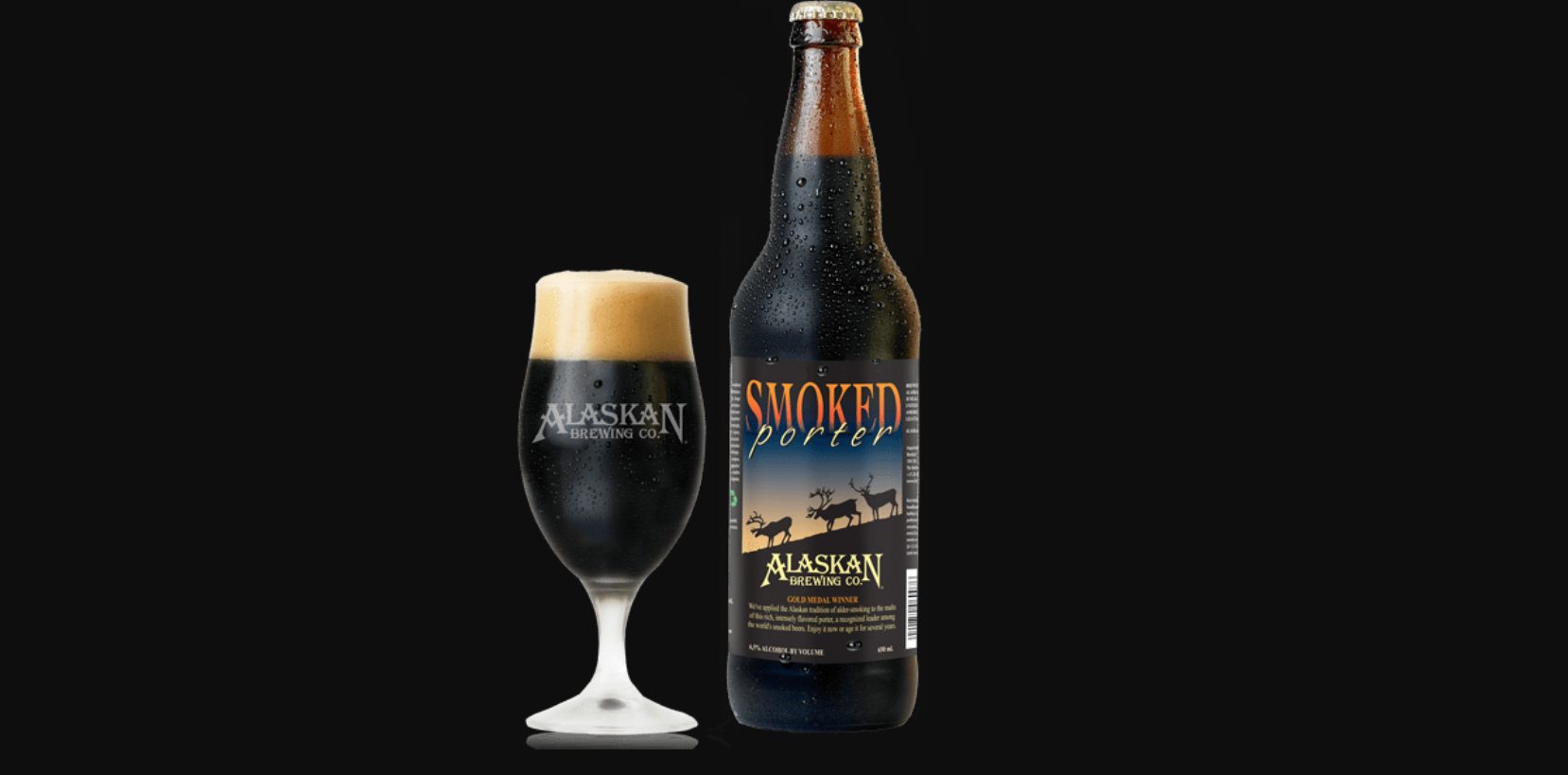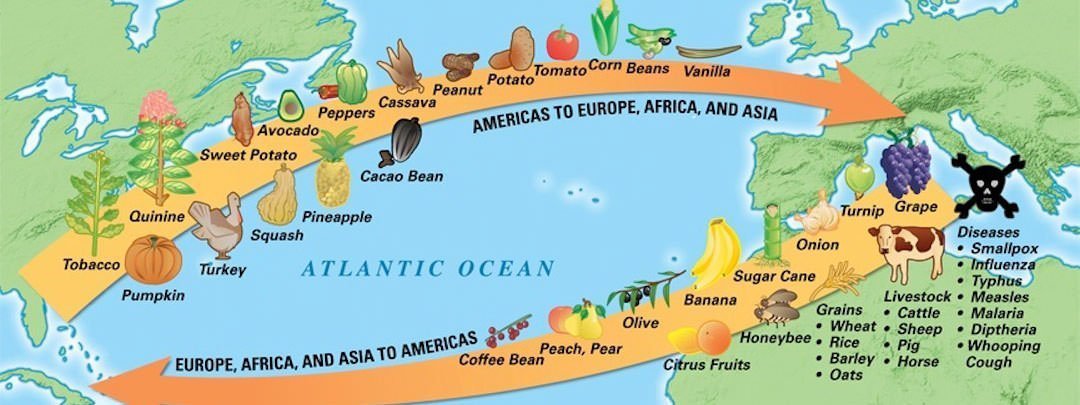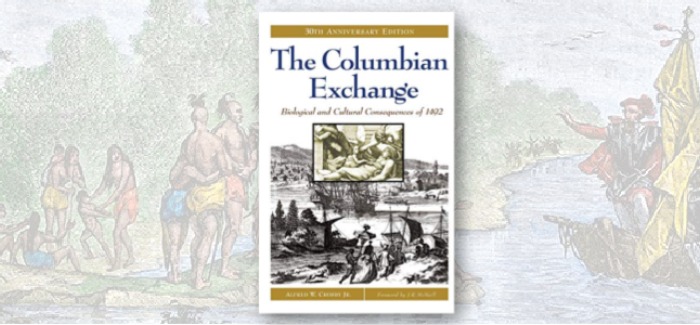Beer & Book Showcase | The Columbian Exchange: Biological and Cultural Consequences of 1492
Before 1492, the Irish had never seen a potato; the Italians had never seen a tomato, and neither cows nor horses had ever stepped foot in North America. For that matter, Blue Grass remained in Europe, not in what is today’s Kentucky. Europeans also brought dandelions. Pathogens came, too, which spelled disaster for the indigenous population (Native Americans); disease killed 80-95% of Native Americans within 150 years after 1492. Those are only a few of the numerous lessons provided in Alfred Crosby’s 1972 seminal work: The Columbian Exchange: Biological and Cultural Consequences of 1492. As we observe Columbus Day, it’s time to crack open a good beer and revisit the groundbreaking book that changed how we thought about 1492.
The Beer
Alaskan Brewing Smoked Porter
Alaskan Brewing not only exists as one of the most sustainable-minded breweries around — turning spent grain into fuel used by the brewery, as one example — but much of the state remains in many people’s eyes, a frontier. As a smoked porter, it enjoys European influence, from both Germany and England. And, just as the book has received many accolades, Alaskan Smoked Porter has won numerous awards. But mostly, it’s just a really darn good beer for drinking while reading.

The Book
Alfred Crosby, The Columbian Exchange: Biological and Cultural Consequences of 1492.
Since the 1960s, the hero status once offered to Columbus has all but been eradicated. Nevertheless, his 1492 voyage begat a global, irrevocable homogenization that profoundly altered the globe and its inhabitants. In short, the Columbian Exchange idea encompasses the exchange of diseases, animals, food, crops, ideas, and more between the “New World” and the “Old World.” Within two weeks after Columbus landed in the New World, the two worlds became one, explained Crosby in the first pages of his 1972 book. Since Columbus’ landing, the numbers of plants and species has continually diminished, and the variations in species from place to place has changed dramatically.
On his second voyage, Columbus led a seventeen-ship, 1,200-man fleet with “seeds and cuttings for the plantings of wheat, chickpeas, melons, onions, radishes, salad greens, grapevines, sugar cane, and fruit stones for the founding of orchards,” noted Crosby. He also brought pigs, cows, chickens, and horses. Not long thereafter, Europeans saw for the first time such items as corn, potatoes and sweet potatoes, tomatoes, beans, chili peppers, squash, peanuts, pineapples, vanilla, cocoa, and much more.

The planting of sugar cane proved to be the most significant, eventually carrying immense weight from an economic standpoint. The Caribbean climate allowed sugar cane to flourish, and bring in tremendous profits for the nations that cultivated it. As a result, European rivals fought wars to gain land and control the production of sugar cane. Like almost all profitable crops in the New World, it helped fuel another commodity: human cargo; the demand to enslave Africans for labor grew substantially as part of what became The Atlantic World economy.
The abundance of food allowed the world population to soar, doubling between 1650 and 1850. Crosby stated: “The coming together of the continents was a prerequisite for the population explosion of the past two centuries, and certainly played an important role in the Industrial Revolution. The transfer across the ocean of the staple food crops of the Old and New Worlds made possible the former.” Caloric intake and nutritional betterment increased substantially, allowing for more adults and, consequently, increased breeding.
The most dramatic and devastating impact of the Columbian Exchange followed the introduction of new viruses and infections into the Americas. Unfortunately for Native Americans, they spent centuries avoiding the barrage of diseases that ravaged Europe, which meant they could not build an immunity to them. Most historians argue that roughly at least 80% (and possibly up to 95%) of the indigenous populace inhabiting the Western Hemisphere died due to disease within 150 years of Columbus’ arrival; tens of millions of people. Indeed, many areas suffered 100% loss — complete extinction of families and nations.

Yes, European (and eventually the United States) conquest and brutality played a part in destroying the Native American populace and way of life. But, that proved minor compared to the damage created by microorganisms. Diseases also led to native leaders dying, creating power voids and civil war, weakening societies that proved more susceptible to European conquest. Many Europeans viewed the viral-induced deaths and weakening armies as part of God’s will and a blessing for settling lands. Whether one focuses on the imperialism or disease, the arrival of Columbus spelled doom for Native Americans.
Crosby ends his book by reminding the readers that the Columbian Exchange did not merely occur in the first few decades after Columbus reached the Caribbean islands. The process continued into the twentieth century. If one had looked at Europe and North America in 1491, the two worlds would have looked markedly different. Today, one would be hard-pressed to look at London, Paris, or Chicago, Illinois, and find many differences in its demographic makeup, the nearby farms, the food consumed and the overall culture. The only reminder of the two worlds comes from the name itself: Chicago, Illinois — two Native American terms that remind of us a disparate world that is no more.
Additional Sources:
- Anderson, Virginia DeJohn. Creatures of Empire: How Domestic Animals Transformed Early America.
- Cronon, William. Changes in the Land: Indians, Colonists, and the Ecology of New England.
- Nunn, Nathan and Nancy Qian, “The Columbian Exchange: A History of Disease, Food, and Ideas.” Journal of Economic Perspective. 24. 2. Spring 2010. 163–188.
- Mann, Charles C. 1491: New Revelations of the Americas Before Columbus.
-
I just love your articles, always good comparisons and descriptions, I like. As for the book, I have already read it. And what can I say? The book is interesting, but somehow difficult to read. Although it really very successfully and deeply describes the fateful year 1492. I think every American should read it at least once in their life, especially one who loves beer. So thank you for reminding me of it)






Comments